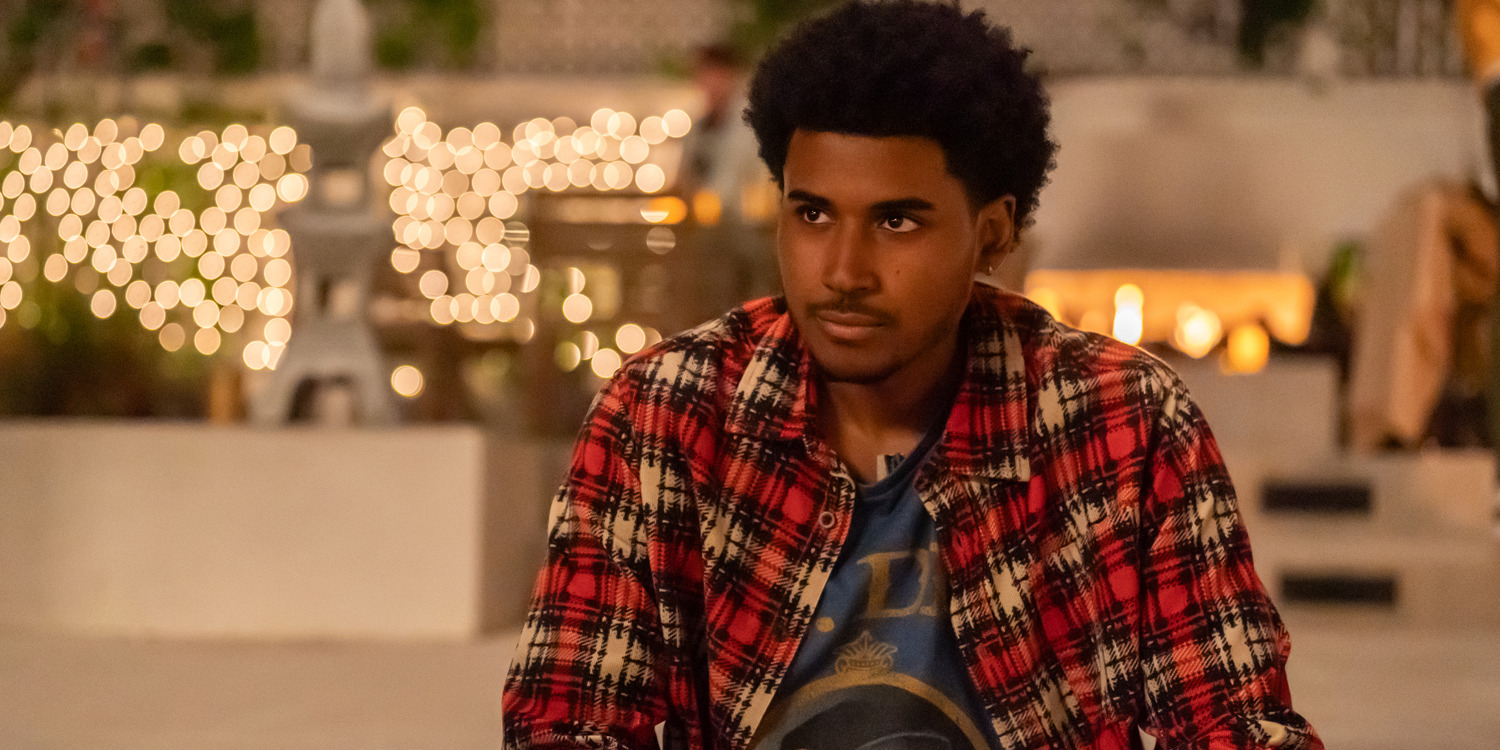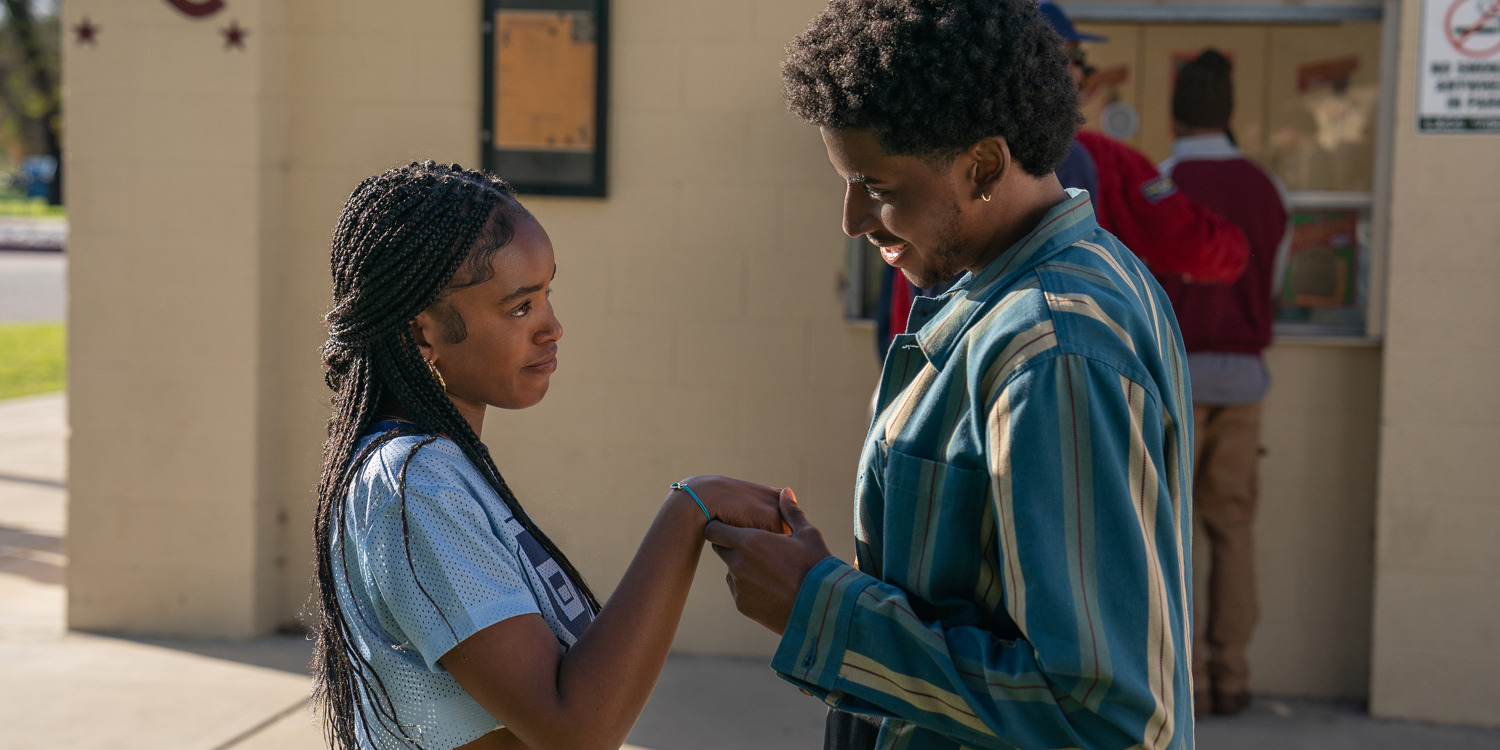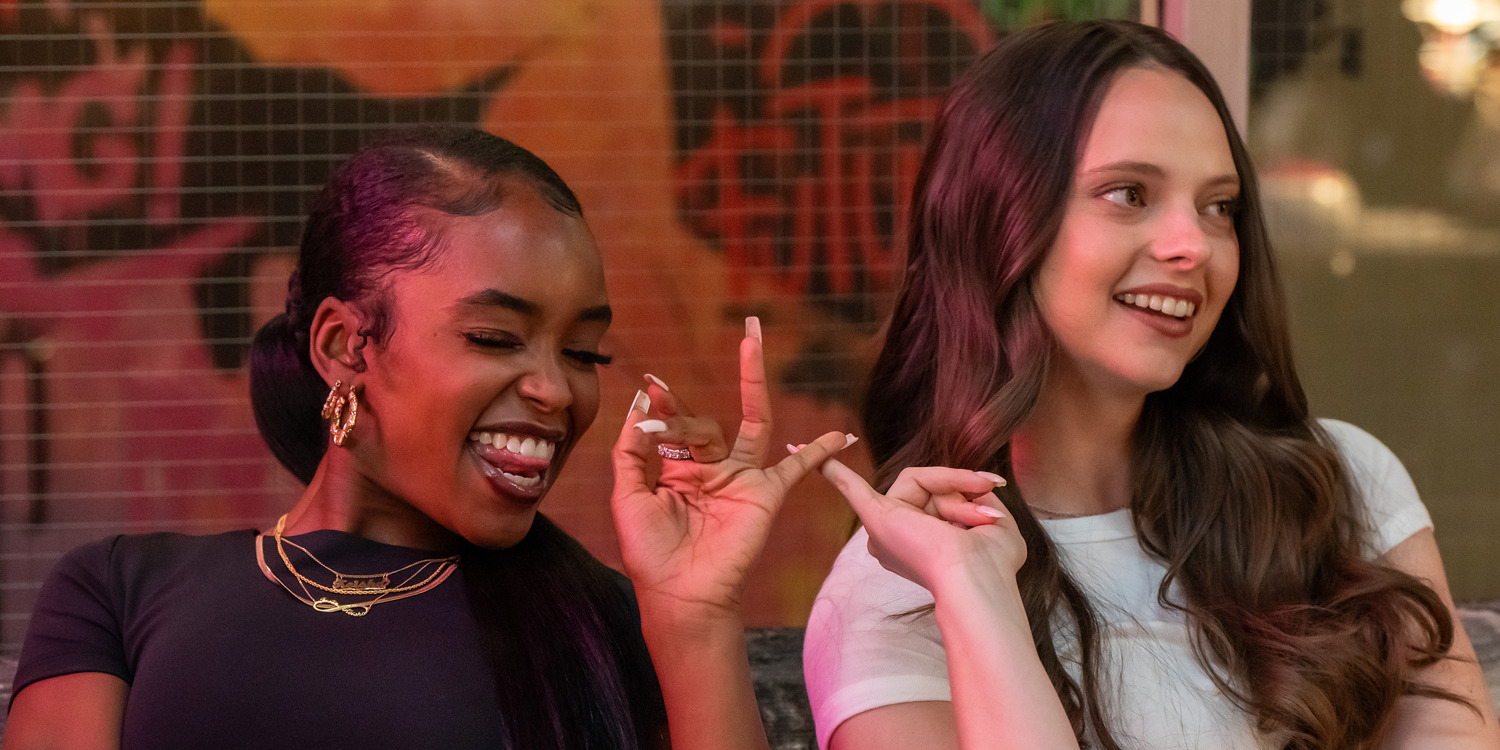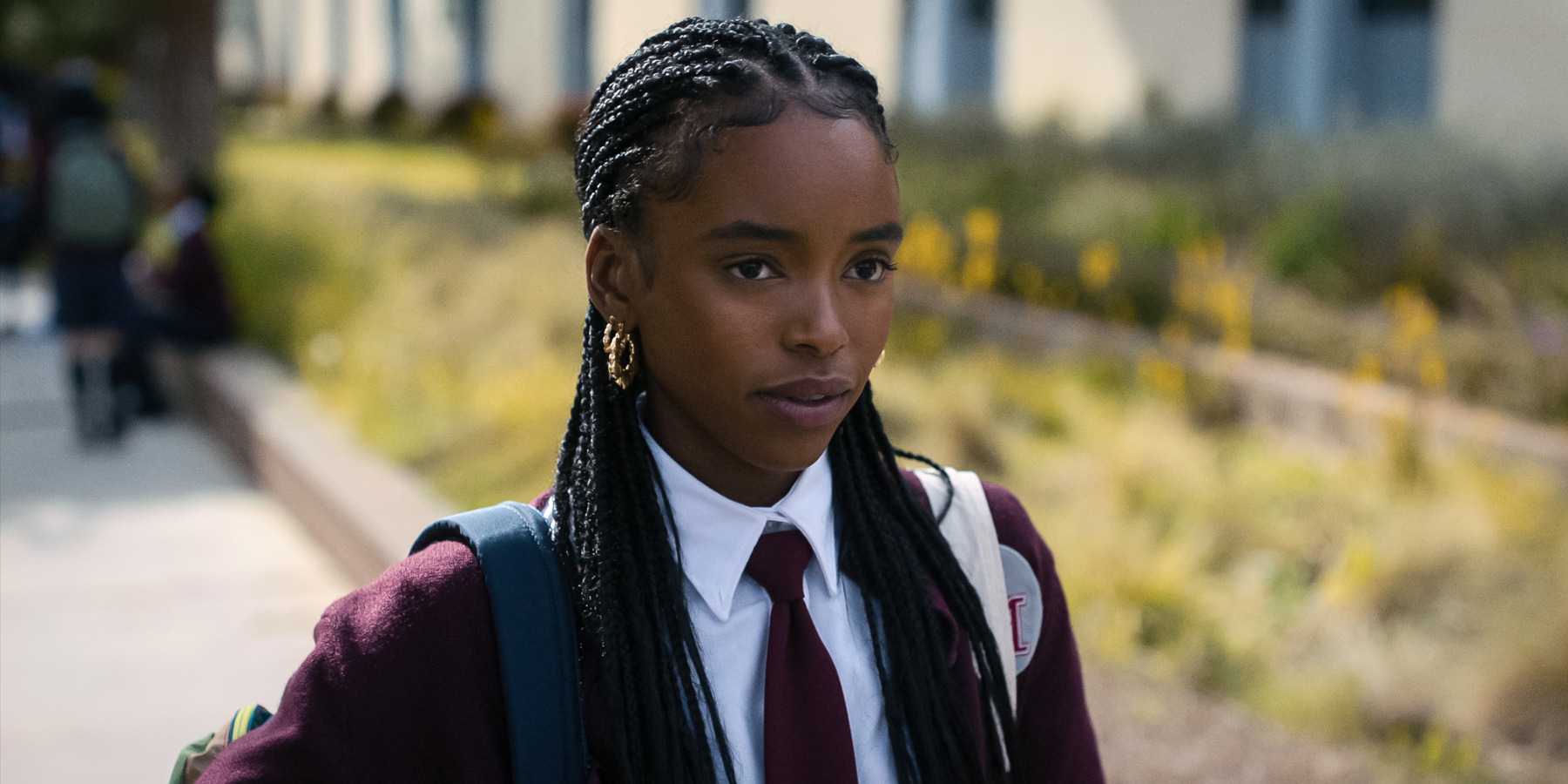Netflix’s ‘Forever’ invites the audience on a journey of first love that is familiar and exciting all at once. The romantic show revolves around Justin and Keisha, whose paths cross at one fateful New Year’s Eve party. The two teenagers, staring down the barrel of their last year at high school, have their own baggage to worry about. Justin’s oftentimes overbearing family has high expectations for his future, even though he remains unsure about what he wants. On the other hand, Keisha is just coming out of a relationship that has drenched her past in complications.
Nevertheless, as the pull between them remains undeniable, the pair find themselves hurtling headfirst into a teenage romance. As they embark on a whirlwind adventure of discovering the love of a lifetime, they end up discovering everlasting parts of themselves. Mara Brock Akil’s coming-of-age story about two young high schoolers and their foray into the world of love and intimacy charts an almost universally resonant narrative. Yet, simultaneously, the characters and their experiences are nuanced enough to add a sense of authenticity to their stories.
Forever Puts a Modern Spin on a Judy Blume Novel
As an on-screen adaptation of a timeless classic, ‘Forever’ retains riveting roots in both literature and reality. The show is based on the critically acclaimed author Judy Blume’s book, ‘Forever…,’ which was first published in 1975. It follows the story of teenagers Katherine and Michael as they navigate their budding relationship while preparing for the uncertain future that awaits them in young adulthood. Blume’s work delves into the topic of teen sexual intimacy with a transparency that was groundbreaking for its time. As a result, the novel saw a polarizing reception in the 70s, inviting both controversy and acclaim for its brazen narrative.

When Blume first penned the novel, which would go on to become one of the most banned books due to its explicit content, she did so for her 13-year-old daughter, Randy. As the author explained, the teenager wanted a story where sex between characters didn’t end in the narrative punishment of death. As a result, she infused her work with authentic and frank depictions of love, sexuality, and their various manifestations in the lives of teenagers. Such a level of representation for a then-taboo topic cemented the novel’s beloved place in the young adult genre. The creator of the Netflix adaptation, Mara Brock Akil, read Blume’s writing at the young age of 12 and became deeply affected and influenced by it.

Thus, Akil was more than overjoyed to receive the opportunity to bring the story to the screen. In a conversation with Netflix, the creator explained, “I’ve always credited Judy Blume as part of the seasoning of my voice as a writer. She was one of the first writers I read that dared to be honest about the human condition in young people, and you can see traces of her writing style within my own. I’m honored to reimagine one of my favorite books, ‘Forever…’.” Initially, Blume herself was skeptical about how her novel from the 70s would translate for the modern audience, who are much more exposed and liberated in their sexualities. Nonetheless, Akil’s adaptation, modified for the contemporary audience, effectively reimagines Katherine and Michael’s story in a more modern era.
Mara Brock Akil Infused Her Own Experiences into the Adaptation
Off-the-bat, Mara Brock Akil’s adaptation of ‘Forever…’ possesses many divergences from its literary inspiration. Instead of the 70s, it takes place in the late 2010s, with Los Angeles becoming the backdrop to the love story. Furthermore, the leads, Katherine and Michael, are also turned into Keisha and Justin, who retain some of their predecessors’ thematic resonance while adding brand-new storylines into the tale. Their narratives still revolve around the basic themes of first love and all that it entails. However, they also introduce a different, yet equally grounded perspective. In the show, challenges like leaked sex tapes and clinical ADHD color the worldview of the protagonists while their identities as young Black individuals in the 2018 era shape the world around them.
For this, Akil directly mined many of her own experiences as inspirations. The creator is known for various other shows, including ‘Being Mary Jane’ and ‘Girlfriends,’ that are all interlaced with profound, realistic, and oftentimes biographical elements. As such, it’s no surprise that ‘Forever’ also achieves its brand of realism through its nuanced connection to Akil’s life. As a result, the creator’s guidance made the translation of Blume’s work into a story about young Black characters that much smoother and more relevant. Nonetheless, even in equipping these drastic departures from Katherine and Michael’s literary tale, the adaptation never strays far from its core narratives.

Complex themes of teenage sexuality, self-identity, and finding agency in your life still exist as the story’s nucleus. Consequently, the show manages to build upon Blume’s work in ways that are new but no less authentic. “I’m thrilled that Mara (Brock Akil) has chosen to tell this story through her own lens,” Blume told Netflix in a discussion about the adaptation. “It is gratifying to know that, 50 years after its release, the love story at the core of ‘Forever…’ is still resonating with audiences.”
Justin and Keisha Are a Blend of Blume and Akil’s Creativity
Given their origins in young adult lit-fiction, the protagonists of ‘Forever’ predictably retain no direct counterparts in reality. Even so, their characterizations are mined from a number of sources that shape their acute sense of realism. For instance, creator Mara Brock Akil’s son, Yasin, inspired and contributed toward many of Justin’s quirks as a character, specifically his inclination for music. In fact, he even contributed to the on-screen music that Justin creates in the show. Likewise, the fictional character’s strained journey to scoring a place at Northwestern University strikes a sense of familiarity given Akil’s own standing as a Northwestern alumnus.

Similarly, various other facets of Justin and Keisha’s life stems from Akil’s own personal anecdotes and experiences. At the same time, the characters retain certain connections to their literary predecessors, Katherine and Michael. Even though there are noticeable differences between the two sets of protagonists, separated by time and racial identities, their experiences as young adults trying to navigate a tense cultural climate inherently strike up a point of connection.
Therefore, Justin and Keisha hold onto some of the authentic characterization first introduced in Judy Blume’s work. In a conversation with Vulture, Akil spoke about the author’s work and its universal ability to resonate. “Even though she (Blume) did not have a lot of Blackness — or any Blackness — in her books, she wrote with such humanity that I could project myself into the story and see myself, and understand.” As such, Akil’s fictitious, reworked protagonists hold onto the same sense of connection to Blume’s work.
Read More: Is Picture This Based on a True Story or a Book? Is Ninth Mandala a Real Studio?


